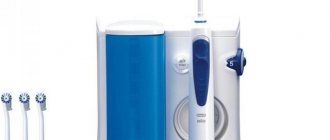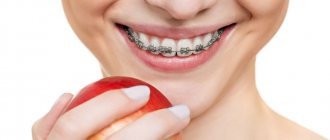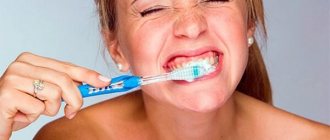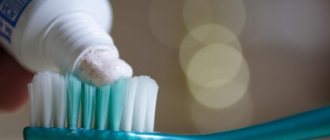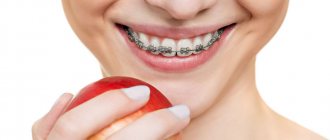What were you looking for and why?
As part of the “Slimes” special project, we conducted surveys on social networks, received many letters - and understood what consumers care about.
Top 7 questions for concerned parents:
1. Do slimes contain potentially dangerous and toxic substances?
2. Is slime a dangerous chemical?
3. Slime can cause allergies and burns. This is true?
4. Is a strong smell a sign of danger?
5. What does the marking say?
6. Is slime
a breeding ground for pathogenic bacteria?
7. Who is responsible for the distribution of potentially unsafe homemade slime?
In order to answer these and other questions, both industrially produced and homemade slimes were purchased, distributed on the Internet and through specialized retail chains. It was important for us to show the results in comparison. The toys tested were produced in Russia, Ukraine and China.
The price range ranged from 55 rubles (Fix Price) to 903 rubles (Poopsie), with an average price of 292 rubles. At the same time, four violations were found for the most expensive product.
To develop the research program, the standards for children's toys TR CU 008/2011 “On the safety of toys” and similar products were taken into account in order to cover the entire range of indicators.
What to do if the slime doesn't work?
If the mixture sticks to your hands, you can add baby powder, talcum powder to the mixture, or spray your hands with deodorant. In some cases, strong cooling of the mass will help, so it is worth putting the container in the freezer. During the cooking process, it is also important to observe the specified temperature conditions.
Important! When cold ingredients are added, the cohesion between the substances is broken, which will lead to failure. If too hot water was used, or uneven heating, the mass may also fail.
If the slime does not stick at all, it is necessary to remove excess moisture from the mass. For this purpose, heating in a water bath or the minimum microwave mode is suitable. To ensure that the chosen recipe does not disappoint, it is imperative to pay attention to the proportions and recommendations, because the order of mixing the ingredients is extremely important. Many slimes require careful kneading in your hands, and to prevent the mixture from sticking, you can lubricate your fingers and palms with cosmetic milk or unscented oil.
How do you like the article?
Briefly about the research results
Let's say right away that there are no serious violations. There is no excess content of hazardous substances, no violations of irritating effects on the skin and eyes.
The main comments were related to labeling, pungent odor, and microbiology. Four brands of slime are not recommended for purchase due to their strong odor: Slime Vime, Attivio, Ninja and Slime by Lenetta. Poopsie slime is not recommended due to its flammability. Three slimes were found to have packaging inconsistencies. In five cases out of 14, labeling violations were detected.
One of the serious conclusions made by Roskachestvo experts is that the market for these toys is outside of legislative regulation. There are no Russian standards for this type of product. Not all slimes that are on sale are certified for compliance with the requirements of TR CU 008/2011. However, there are manufacturers who certify their products as “toys for children”, and then such slimes are subject to appropriate regulation and compliance with TR CU 008/2011. Nine of the slimes we tested were declared with full markings and with an EAC mark, which indicates compliance with TR CU 008/2011. But only the following brands stood out among them: Mr. Boo, Monster's Slime, Mega Mix. And part of the market is slime, which children-slimers mix at home and sell them - either at school, or online, or through specialized retail outlets. Such goods can be sold, for example, as souvenirs.
How to give a toy the desired properties
The slime doesn't always work out the first time. Don't despair. Perhaps the proportions are incorrect or low-quality ingredients are used. In order not to be disappointed and not to waste raw materials, it is recommended to knead small portions and follow seven tips.
- Temperature of liquids. Any liquids used should be at room temperature or slightly warm. Cold ingredients do not mix well.
- Dyes. Food coloring, gouache, acrylic, watercolor, nail polish, brilliant green or potassium permanganate can give a certain color to the slime. Two dyes not mixed with each other and not mixed into the base will give a non-uniform color.
- Proportions. An unsuccessful slime can always be saved by equalizing the proportions. Powdered ingredients, viscous glue, and borax add thickness and elasticity. Liquids (shampoo, soap solutions, PVA) make the mixture more fluid.
- Storage. It is best to store the toy in a closed container in a cool, dark place. Lizun does not tolerate direct sunlight, quickly erodes and dries in the fresh air.
- Adding elasticity. Vinegar and glycerin give ductility and plasticity to soap slimes. Just adding a few drops is enough.
- Eliminate stickiness. If the toy sticks too much to surfaces and hands, you should add peroxide.
- Return of elasticity. Salt crystals will take away excess moisture and make the slime elastic again. The “current” toy should be “salted” and left overnight in a closed jar.
Slime prepared according to any recipe is not recommended to be stored for more than seven days. The ingredients gradually lose their binding and elastic properties, liquids and borax evaporate. In addition, during active play, the mass becomes covered with lint, crumbs and dust. It's better to throw out the old toy and mix in a new one.
Having figured out how to make slime with your own hands, you can experiment by mixing different ingredients. A little patience and everything will definitely work out. After playing with slime, it is recommended to wash your hands, even if the toy is made of harmless substances.
What is slime and what is it made of?
Today, slime is not just a mysterious “slime” or a sticky mass of polymer components. This is a whole mini-industry of goods for children and teenagers. In this system, manufacturers of ready-made slimes, as well as raw materials and components for sliming, the slimer-influencers themselves, and specialized retail chains coexist. Hundreds of thousands of children and teenagers buy or create new designs themselves, and parents become hostage to their passion. And they are quite rightly concerned about how safe this “toy” is.
Main components of slime
- Polymer base
PVA glue
- the basis of a home toy. Its main component is polyvinyl acetate, a low-toxic compound. Manufacturers use polyvinyl alcohol or polyvinyl acetate as a polymer base. There are several types of glue that slimers use:
PVA stationery
(“Red Ray”, Elmer’s, Dr. Fan, Erich Krause, “Moment” PVA). These adhesives consist of polyvinyl acetate, vinyl acetate and a plasticizer. The last two components have a 3rd degree of danger (1st degree is a very dangerous substance), but their proportion in the glue is very small to pose a danger. Therefore, PVA glue is classified as a low-hazard substance (in accordance with GOST 12.1.007-76 “System of occupational safety standards. Harmful substances”). And although manufacturers indicate “Non-toxic” and “Safe for children” in the labeling, the safety data sheet for these products indicates that when working with such glue it is necessary to wear gloves and safety glasses, and the room must be ventilated. Do not allow glue to get into your eyes. Ingestion may cause poisoning.
PVA-M
(“Moment Stolyar” PVA, Goodmark PVA-M, Stick Up, “Contact”). Consists of polyvinyl acetate dispersion, aqueous dispersion, plasticizers and water. Refers to low-hazard substances. In case of contact with eyes and skin, it causes mild irritation. Avoid ingestion. When working with this glue, it is advisable to use gloves and goggles.
- Activators
Boric acid.
In 1987, it was banned in the USSR as an antiseptic. Now sold in pharmacies. Found in some recipes on the Internet as an activator. And although the body has resistance to boric acid, if ingested, a small amount of it may have time to break down, which will lead to poisoning. Children cope worst with the effects of acid. In acute poisoning of people, it affects the brain, mucous membranes and skin. Not recommended for use in children.
Sodium tetraborate (borax or borax powder)
– causes acute irritation to the skin and eyes; with prolonged or repeated exposure to mucous membranes, it can cause damage to organs. Wear safety glasses and gloves when using. It must be used in ventilated areas. You can get poisoned even by inhaling dust when working with powder.
A solution containing 20 g of sodium tetraborate in 80 g of glycerin
– Irritating to eyes, skin and respiratory tract. Use only with gloves and in a ventilated room: the solution evaporates at 20 degrees, and in a short time such a concentration of the substance in the air can be created in the room that will lead to poisoning. If the solution gets inside, it is life-threatening.
Liquid for lenses
– also contains sodium tetraborate, but in a much smaller amount (however, if there is very little of it, the liquid will not be able to activate the slime).
Usually added along with baking soda. Attention
It must be remembered that all of these are drugs that can be safe in small doses, but pose a threat when used non-medically. The greatest risk of ingesting sodium tetraborate is through inhalation. Use these substances only in the presence of adults, in a well-ventilated area and when using gloves, glasses and a mask.
In addition, slimes may contain:
Water
– purified or distilled. Not used in all slimes.
Food coloring, flavorings, fillers
– are needed to give the mixture a certain color or design. In addition to these components, shaving foam, spices, guar gum and other substances can be used to make the toy unique.
What can you replace the ingredient with?
When making slime, sodium tetraborate plays the role of an activator, which improves the properties of the jelly-like mass. To reduce the toxicity of the toy, it is recommended to use products with a lower content of orthoboric acid salts or with other components as a catalyst. Suitable for making slime:
- Starch with water. For a small slime, just add 100 ml of a solution prepared from water and starch in a 1:1 ratio to PVA glue, film mask, shampoo or shaving foam.
- Lens solution. Liquids for contact lenses, which contain a salt of orthoboric acid, are used as an activator.
- Baking soda with liquid soap. The ingredients are mixed in a ratio of 1:4. It is very important not to overdo it with soda, otherwise the slime will lose its elasticity.
- Plasticine with gelatin. 5 g of gelatin pour 3-4 tbsp. l. warm water. A small block of ordinary plasticine is heated in a water bath until it softens. Add gelatin mass to it, after which the components are thoroughly mixed.
The easiest way is to replace sodium tetraborate with Teymurov's spray, which contains sodium borate, peppermint oil and salicylic acid. To make a slime the size of a fist, you will need no more than 3-4 ml of this antiseptic.
Most borax substitutes do not have the necessary properties, so the elasticity of the slime is reduced. To increase its ductility, it is advisable to use as a second basic component:
- guar gum;
- office glue;
- polyvinyl acetate (PVA).
They significantly increase the firmness and elasticity of hand chewing gum. Thanks to the synthetic composition, the risk of mold forming on the toy is reduced. Therefore, its service life is extended to 2 or more weeks.
Why slime attracts children: the opinion of psychologists
Svetlana Klyuvaeva
child psychologist, head of the child psychology club “Heart”
– Slimes can relieve stress and work as analogues of anti-stress toys. They, of course, also develop fine motor skills in a child, but children develop them in general from many things - everything that falls into their hands - so there is no need to talk about any special benefits of slimes specifically. They attract the child with their shape, pleasant sensations for the hands, and unusual tactile qualities.
Part of their popularity is due to trendiness. Nowadays the trend is to show what you have done yourself. Therefore, the process of making a product causes cravings in children. Designer slime is both an original toy and an easy way to make money. Let's remember how in American films children sold homemade lemonade on the lawn of their house. Only the form changes: today it’s slime, tomorrow it’s something else.
Children simply follow adults. Since adults went to YouTube to show their lives, creating a trend, children followed them. You did something and instantly received feedback, feedback in the form of likes and comments. This is a phenomenon that we need to put up with, it is already part of our life, it will not go away anywhere.
Read how a psychological examination of slimes is carried out HERE.
Can slimes develop psychological dependence? Read HERE.
Video
You can avoid mistakes when making slime if you follow all the instructions from the video. The main thing is to observe the ratio of ingredients and mix them in the specified order.
You can learn more about how to make slime by watching the video below:
Any slime requires proper handling . They should be stored in a special container. It is left in the refrigerator. Slime easily loses its elasticity when exposed to heat. If a toy becomes dirty, wash it with water. This will allow you to keep the gum for your hands for a longer time.
Is slime a dangerous chemical?
Products from 14 brands were tested to contain excess levels of 29 potentially hazardous chemicals, including alcohols, toluene, formaldehyde, mercury and arsenic. Let us say right away that no violations were found.
The greatest concern among consumers was the boron content in slimes. Foreign studies
showed that the boron content in the products of some manufacturers was four times higher. Boron can cause rashes on the skin of your hands. However, boron in its pure form is not included in slimes. Boron is found in the form of various compounds, depending on the composition of the slime. One such compound is sodium tetraborate, a salt of boric acid. Tetraborate or another boron component is added to the polymer medium. Then a reaction occurs with the polymer - due to this, slime is formed. When mixing occurs, the tetraborate binds to the polymer and goes into an inactive form, becoming a neutral organic boron. Unreacted tetraborate may react on the skin. Therefore, Roskachestvo experts determined the content of sodium tetraborate in the toy, focusing on the content of this substance in water (according to GOST 31949-2012). According to the test results, no content exceeding 3% of the mass fraction was found in any product.
– Slime is based on a polymer, and often manufacturers do not even indicate on the label what this base consists of. But we do not find elemental boron, as we find it in the periodic table, outside of any compounds in slime at any stage. Boron in slime is already in a bound state - we do not detect it in the form of a gas unsafe for health. Even when borax is heated, boron will not be released. It would be incorrect to determine the presence of elemental boron in slime,” comments Dmitry Kruzhkov, laboratory assistant at the conformity assessment department of the Federal Budgetary Institution “URALTEST”.
What is included in slime?
The slime recipe is simple: glue + activator + additives.
- Glue is the binding ingredient that forms the basis of the slime.
- Activator - initiates the gelation reaction, due to which the glue thickens. Sodium tetraborate is most often used in manufactured toys. When the substance interacts with glue, it forms a plastic mass.
- Dyes, flavors, glitter (sparkles) – decorative fillers. With their help, toys are given a more attractive, marketable appearance.
The choice of components affects the quality and characteristics of the resulting slime. To make toys, various household adhesives are most often used (sometimes construction or office adhesives), but the result does not always live up to expectations. Sometimes the slime turns out to be too sticky, runny or not transparent enough. Let's try to find out what glue will help make a good toy.
Does slime cause allergies and irritation?
Experts have conducted a range of tests to determine whether slime is truly toxic. All toys studied are in accordance with TR CU 008/2011 and the Unified Sanitary-Epidemiological and Hygienic Requirements for Goods Subject to Sanitary-Epidemiological Surveillance (Control). This means that they do not have allergenic properties and do not irritate the mucous membranes of the eyes and skin.
In addition, the tests revealed the potential for acute poisoning. No products were considered dangerous. The substances from which slimes are made do not accumulate in the body: if a child plays with slime for a long time on an ongoing basis, the components of this slime do not have the necessary cumulative effect to cause poisoning.
How to make slime from toothpaste
Toothpaste is often used as a thickener instead of flour. It should be gel-like and very thick. You can make this slime very quickly.
Ingredients:
- 1 tube of toothpaste;
- dye or additional decor.
Recipe:
- Squeeze the toothpaste into a metal container.
- Add dye and mix well.
- Place on low heat and stir constantly.
- After the excess moisture has evaporated, transfer the paste to an airtight container, cool and transfer to the refrigerator.
This “slime” should be stored in the refrigerator. If you leave it at room temperature for a long time, it will begin to dry out very soon. True, it will not be difficult to restore it - you just need to add a little water and knead the mass thoroughly again.
Toothpaste slime can be made by mixing soap and toothpaste in equal proportions. Flour or potato starch is added to the resulting mixture until the “dough” becomes plastic and elastic. It is best to knead this paste with hands slightly moistened with water so that the slime does not stick to your fingers. If the consistency of the toy is too thick, you can dilute it with a small amount of warm water and then continue kneading.
Advice! To make the slime stretch better, add a few drops of vinegar; hydrogen peroxide will make the toy airy and not sticky, and glycerin will make it slippery.
Is slime a breeding ground for pathogenic bacteria?
Not a single slime out of 14 brands contained staphylococcus, Pseudomonas aeruginosa or enterobacteria. But immediately in two brands of slime, excesses in the number of microorganisms were recorded. The manufacturers of these products have not indicated at what age their toy can be given to children. And although it is unlikely that parents will allow a child under one year old to play with slime, experts took into account the lack of warning labels about age. They proceeded from the premise that slime could fall into the hands of a one-year-old baby, so the standards were taken for children under one year of age.
According to TR CU 008/2011, the total number of KMAFAnM microorganisms (mesophiles, aerobes and facultative anaerobes) should not exceed 102 CFU/g. This standard was exceeded six times in the Dobr Bobr slime, and 2.2 times in the Thelarek.ru slime. A significant content of viable bacterial cells indicates either insufficient heat treatment of raw materials by the manufacturer, or violations of sanitary standards, or unsatisfactory storage conditions.
But what kind of sanitary standards can we talk about if a significant share of the slime market consists of designer toys? The detected excesses in the number of microorganisms are food for thought for parents. If a child purchases slime of unknown origin or makes it himself, there is no guarantee that such a toy is safe from a microbiological point of view.
Yeast and mold were found in products from the same brands. In Dobr Bobr, 1.6 × 103 CFU were found in one gram, and in Thelarek.ru - 1.5 × 105 CFU.
Even a small amount of mold and microorganisms can cause allergies or skin irritation, and the toy itself will simply deteriorate quickly. Slime can be infected with fungal spores during production, and it itself is a good moist environment for the further development of the fungus.
Attention! If you find fungus on your slime, immediately throw it away along with the packaging.
There is no need to try to cut off the infected part. It is advisable to dispose of all dishes where the toy was stored to prevent the spread of mold.
How to make clear slime
If you are already tired of colorful “slimes”, you can try another interesting recipe.
Ingredients:
- 100 ml polyvinyl alcohol;
- 25 g sodium tetraborate.
Recipe:
- Pour alcohol into a plastic container.
- Add boron little by little, stirring constantly.
- Then knead the slime well in your hands. This must be done for at least 10 minutes, after which the slime is ready.
What does the pungent smell of slime mean?
If during manufacturing the proportions were violated or unnecessary, low-quality components were added, such slime will have a pungent odor. The intense smell in slimes is caused by the high content of flavorings.
According to TR CU 008, toys for children over three years old (it was assumed that no parents would give slime as a toy to a child under this age) should not have an odor intensity of more than 2 points (where 0 is no odor, and 5 is a suffocating pungent odor) . Slime from 4 brands had a pungent odor of 3 points: Slime Vime, Attivio, Ninja and Slime by Lenetta.
When choosing slimes with a strong smell, it is best to avoid them. They may be potentially unsafe.
So it’s better not to make slime at home either?
Homemade slime ingredients also contain boron (in the form of tetraborate, borax, or contact lens fluids) and potential allergens.
More reading on the topic:
Six toys that kids love and parents hate
Not just pop-it: 8 anti-stress toys that you can buy on Aliexpress
5 most dangerous toys for children
Water is not slime's friend
Roskachestvo experts conducted two tests on how slimes behave in a humid environment. Dye migration was detected in slimes: Mr. Boo, Fix Price, Attivio, Slime by Lenetta. High-quality slime should not stain your hands.
Slime can dissolve partially or completely in water. If during play the slime gets into the water and remains there, then you risk being left without a toy: some slimes completely dissolve - especially in hot water. And, for example, slimes “Good Beaver”, Slime Vime, Slimedesign, Mr. Boo, Thelarek.ru will dissolve even in cold weather.
Advice
: It is important that the child plays with the slime with clean, dry hands. Low-quality slimes can stain hands and surfaces, and a number of artificial dyes can cause skin irritation.
In addition, the packaging of the toys was tested for strength and tightness. Poopsie's slime had the flimsiest packaging. It is not airtight and will not withstand falling or strong compression. Be careful: check your copy carefully.
We asked a dermatologist what rules should be followed when playing with slimes.
Larisa Alekseeva
therapist, dermatologist
– Slime as toys has more benefits than harm. But they should be given to children only at an age when they fully understand that such toys should not be put in their mouths or in their eyes. The optimal age in this case is from 5 years.
The main danger to hands in slime can be unnatural dyes. PVA glue is, in principle, harmless, like borax, but under no circumstances should it come into contact with the mucous membranes; it is necessary to prevent the slime from getting into the mouth. Dyes, especially unnatural ones, can cause allergic reactions, bronchitis and skin rashes. If a child plays with slime with clean, dry hands and on a special napkin or other clean surface, then the toy can be used for a long time without harm.
- If a child rolls slime on the floor or carpet, it is better to immediately throw away such a toy, without even trying to wash it.
- If a child has wounds or cuts on his hands, it is advisable not to play with slime. Getting borax into wounds can corrode them, lead to rashes, or cause a minor infection.
- Attention! Such toys are contraindicated for children with allergies, asthma and skin diseases.
Overall, this is a good anti-stress toy for a child.
Tatiana Butskaya
Chairman of the Council of Mothers, pediatrician, expert of the ONF
– This is a toy, and you don’t have to put it in your mouth. Here is one of the most important recommendations for parents. Slimes smell delicious, they are an attractive color, and you want to taste them. And it’s better to further scare the child by telling him that if the slime gets in his hair, he’ll have to cut his hair, and if it gets into the wallpaper, then dad will get angry. The child needs to be shown and explained what can and cannot be done with this toy. Using such examples, the child will understand why slime should not be put in the mouth or placed on the head.
Causes of errors and their correction
There are several reasons that prevent you from making slime:
- Wrong choice of glue . It is better to opt for PVA glue from. You can also use silicate glue from various manufacturers. These types of glue are sold in bookstores and office supply stores. When purchasing, you need to pay attention to the production date.
- Expired sodium tetraborate . An expired product is less active.
- Not maintaining proportions . Add tetraborate drop by drop and mix thoroughly.
You can fix a failed slime in the following ways:
- If, when preparing the mixture, glue was used that has lost its properties, then a film mask is used to correct this. It is added to the mass. If it does not begin to thicken, you can add more borax.
- If the glue does not thicken even after adding tetraborate, you can add washing gel, starch or lens care liquid instead.
- Sometimes it happens that drills add more than the required amount. The glue begins to curl into flakes or the slime becomes very hard. In this case, do the following:
- add more glue;
- use a film mask;
- add cream or gel to the mixture;
- heat or add warm water.
What does the marking say?
The marking is a good indicator of whether you are holding an industrial slime in your hands or a so-called original one, made at home. Toys from bona fide manufacturers must indicate:
- Date of manufacture.
- Manufacturer's name and location.
- Information for contacting the manufacturer/importer.
- Minimum age of the child for whom the toy is intended.
- EAC mark confirming product compliance with the standards of the countries of the Customs Union.
Five home-made toys did not have this information in the labeling: Slime Vime, Slimedesign, Thelarek.ru, slimeo.ok. Roskachestvo sent letters of claim to these distributors, and all companies have already responded, promising to make changes to the label. “Slime Superpower” does not have a warning label about handling the toy with caution.
So are homemade slimes really more dangerous than industrial ones?
Our research did not find any serious security violations in them. And although only three of these homemade slimes were found to have other violations, you need to remember that purchasing designer slimes carries certain risks. Their production process is not controlled in any way, and the products themselves are not certified.
Tatiana Butskaya
Chairman of the Council of Mothers, pediatrician, expert of the ONF
– It’s better not to buy homemade slimes. Parents should only buy slime that is certified or made from certified ingredients to ensure that the toy does not contain any hazardous substances. And even if a child wants to make his own slime from a kit, this kit must also have a certificate.
Each generation has its own toys. We collected candy wrappers and sold these collections. And our children now have the opportunity to make slime with their own hands - perhaps even a whole collection. Therefore, this hobby is not surprising. Especially if the child knows how to do something better than others. But I would still limit the sale of slimes between children, because it is not known where other children get the money to buy them. This needs to be looked at seriously.
Is it worth buying homemade slime?
As part of the study, experts from the Russian Quality System also checked several home-made toys. Despite the fact that no serious security violations were found, buying designer homemade slimes always carries some risk. Their production is not controlled by any regulations, and the products are not certified. To be sure of the safety of the toy, Roskoshestvo advises giving preference to slimes that are certified or made from certified materials.
Who is responsible for the distribution of potentially unsafe homemade slime?
Andrey Belousov
Lawyer, Candidate of Legal Sciences
– According to paragraph 4 of Art. 7 tbsp. 492 of the Civil Code of the Russian Federation, it is not allowed to sell a product without information about mandatory confirmation of its compliance with mandatory requirements ensuring its safety for the life, health of the consumer, the environment and the prevention of harm to the consumer’s property.
When selling goods, the seller brings to the buyer’s attention information about confirmation of the goods’ compliance with the established requirements by marking the goods in the prescribed manner with a conformity mark and familiarizing themselves with documents confirming certification. If at the time of sale of a product there is no certificate of conformity at the place where it is sold, certifying the safety of such a product, the guilty person may be held administratively liable.
If slimes are declared by the manufacturer for sale not as a children's toy, but as souvenirs or as glue products, they do not require certification and confirmation of conformity.
Therefore, it should be recognized that there is a gap in regulatory regulation regarding slimes, associated with the emergence of a new category of goods, a new “old” method of production (not industrial, but artisanal), in which we are not talking about mass production.
How to make slime from plasticine
A very simple and affordable recipe, without the use of dyes. Plasticine slime is soft and elastic. You can use regular plasticine, but it works best from a special airy or neon material.
Ingredients:
- 1 block of plasticine (about 100 grams);
- 1 tbsp. warm water;
- 50 ml boiling water;
- edible gelatin.
Recipe:
- In a separate metal container, dissolve the gelatin in warm water, then heat it, but do not bring it to a boil. The gelatin mixture should stand for about an hour until the substance thickens.
- During this time, dissolve the pieces of plasticine in hot water and mix until a homogeneous mixture is obtained.
- Pour the dissolved plasticine into the container with gelatin in a thin stream.
- Mix well and leave in a cool place until it hardens.
- After an hour and a half, the slime is ready.
